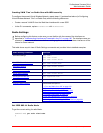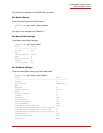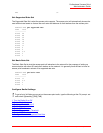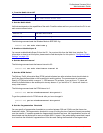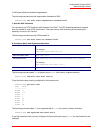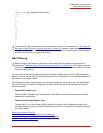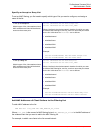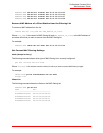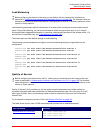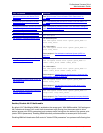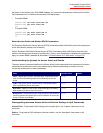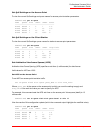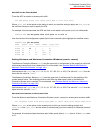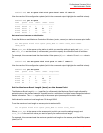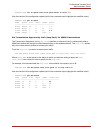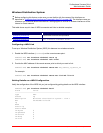
Professional Access Point
Administrator Guide
Class Structure, Commands, and Examples - 238
Load Balancing
Load balancing parameters affect the distribution of wireless client connections across multiple access
points. Using load balancing, you can prevent scenarios where a single access point in your network
shows performance degradation because it is handling a disproportionate share of the wireless traffic. (For
an overview of Load Balancing, see “Load Balancing” on page 139
.)
The access point provides default settings for load balancing.
The following command examples reconfigure some load balancing settings and get details on the
configuration:
USR5453-AP#
set radio wlan0 load-balance-disassociation-stations 2
USR5453-AP#
get radio wlan0 load-balance-disassociation-stations
2
USR5453-AP#
set radio wlan0 load-balance-disassociation-utilization 25
USR5453-AP#
USR5453-AP#
get radio wlan0 load-balance-disassociation-utilization
25
USR5453-AP#
set radio wlan0 load-balance-no-association-utilization 50
USR5453-AP#
USR5453-AP#
get radio wlan0 load-balance-no-association-utilization
50
Quality of Service
Quality of Service (QoS) provides you with the ability to specify parameters on multiple queues for
increased throughput and better performance of differentiated wireless traffic like Voice-over-IP (VoIP),
other types of audio, video, and streaming media as well as traditional IP data over the Professional
Access Point.
For a complete conceptual overview of QoS, see“Quality of Service” on page 143
.
This table shows a quick view of QOS commands and provides links to detailed examples.
Note
Before configuring this feature, make sure you are familiar with the names of the interfaces as
described in “Understanding Interfaces as Presented in the CLI” on page 190
. The interface name you
reference in a command determines whether a setting applies to a wired or wireless interface or to the
Internal or Guest network.
Note
Before configuring this feature from the CLI, make sure you are familiar with the names of the inter-
faces as described in “Understanding Interfaces as Presented in the CLI” on page 190
The interface
name referenced in a command determines if a setting applies to a wired or wireless interface or to the
Internal or Guest network.
QoS Command Example
Enable/Disable Wi-Fi Multimedia
set radio wlan0 wme off
set radio wlan0 wme on
get radio wlan0 wme



